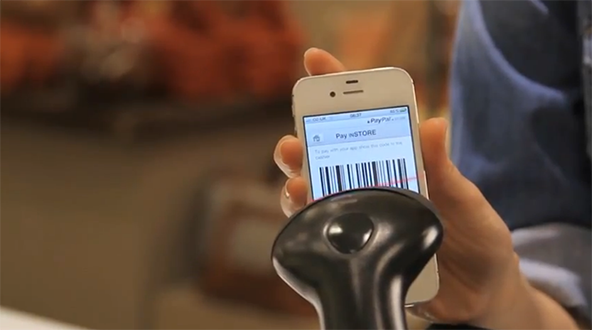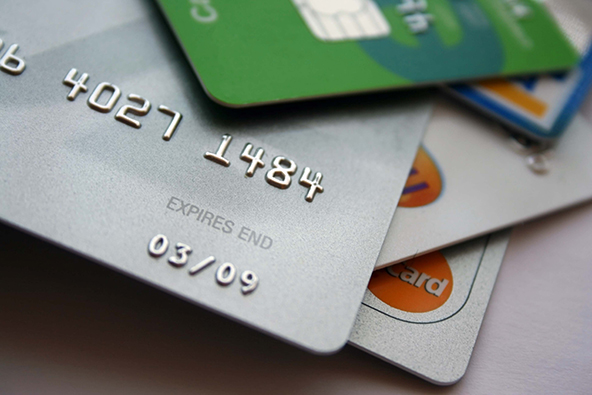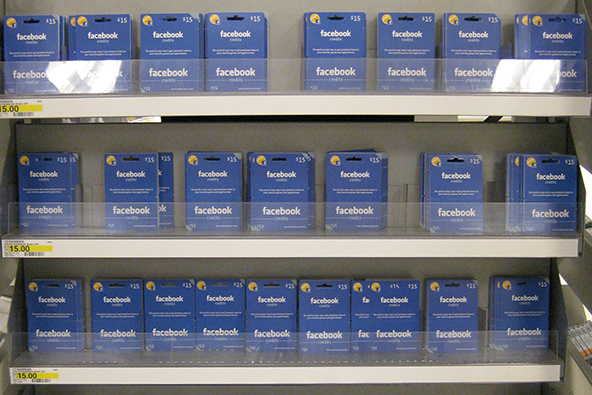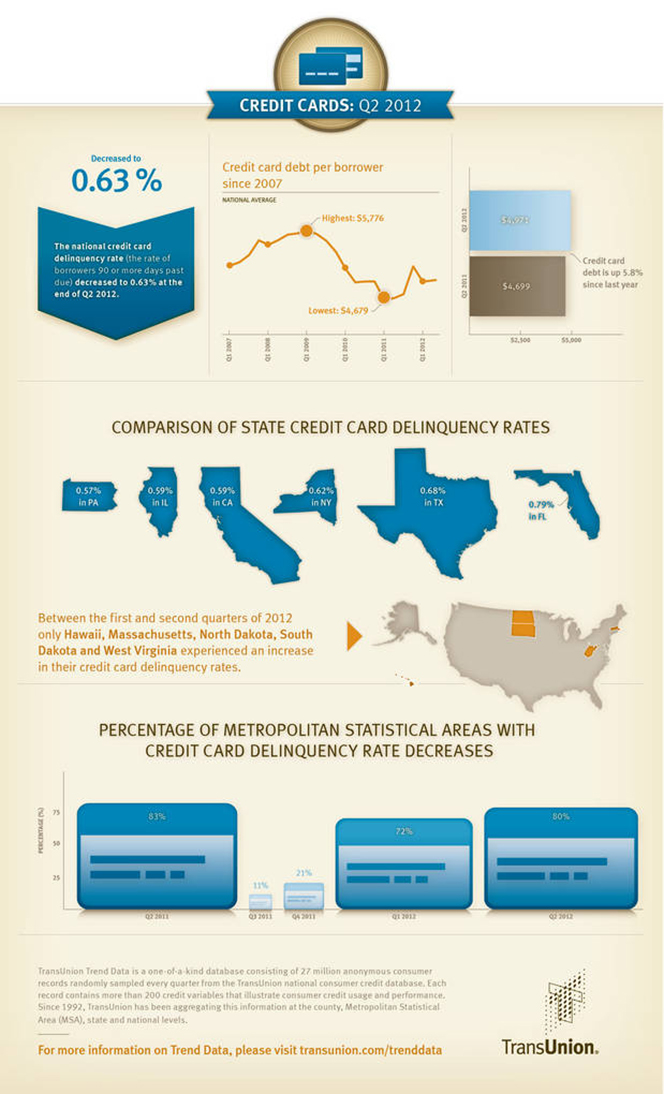PayPal Is Doing a ‘Starbucks’ in the U.K.

PayPal has launched a new mobile payments service in the U.K., which enables customers to use their phones to check themselves out of participating stores, without requiring retailers to install new equipment to make this possible. The new service will be competing with Barclaycard’s PayTag, which does the same thing, but uses a different data transmission technology — the near-field communication (NFC) technology — which, crucially, does require merchants to install new point-of-sale (POS) hardware.
PayPal’s new payment service relies on the technology that powers Starbucks’ Mobile Pay, which launched in the U.S. in January 2011 and immediately turned into a runaway success. However, PayPal’s version is a marked improvement over Mobile Pay, because it is far less restrictive in the choice of a payment method at the checkout. Whereas a Mobile Pay user can only pay the transaction amount with a Starbucks prepaid card, a PayPal user can choose any one of the payment accounts stored in his or her PayPal account. That is a huge improvement indeed and it also prompts a question: do we really need NFC?
How PayPal inStore Works
PayPal’s new m-payments service, called inStore, will initially be available in four U.K. stores: Coast, Oasis, Karen Millen and Warehouse. Before they can pay with it, PayPal users will need to download an app, which is only available for the iPhone and Android-based devices (BlackBerry is getting left ever farther behind).
Whenever an inStore user is ready to check herself out of a participating store, she would launch the app and log into her account. Then:
- The app will display a unique barcode and number on the phone’s screen.
- The retailer will either scan the barcode or key-enter the number into the POS terminal.
- The payment amount is deducted from the customer’s PayPal balance or is funded with her preferred payment method and she receives a confirmation email.
Payments can be completed even if the user has no mobile network or WiFi coverage. That is possible, because the app stores several barcodes at any time, which can then be used offline when they are needed.
Additionally, inStore acts as a coupon book, which contains offers PayPal thinks may be of interest to its user. Once she finds an offer she likes, the user will need to accept it and then the discount will be automatically applied at the checkout.
The Case against NFC
PayPal inStore makes a very strong case against the need for NFC adoption. By most measures, the two services seem indistinguishable. To begin with, both Google Wallet and inStore use a four-digit PIN for log-in purposes. Both Isis and PayPal support all major credit and debit card brands, as well as other methods (and Google Wallet has promised to do the same). And inStore’s checkout procedure is almost identical to the one implemented by either of the two major NFC-based wallets.
However, PayPal has a huge advantage over its NFC-based rivals and it is one that would be appreciated by merchants and users alike. The former do not need to install any new hardware to be able to accept inStore payments and the latter do not need to get new (and expensive) handsets to be able to use the new service. PayPal U.K. managing director Cameron McLean makes a valid point when he tells The Telegraph that:
[It] underlines our view that mobile payments don’t need NFC technology to succeed… PayPal’s ‘pay by mobile’ service works with the phones most of our customers already own. And our retail partner doesn’t have to install new systems to take in-store mobile payments.
Indeed and it is very difficult to find a plausible counter argument.
The Takeaway
Starbucks Mobile Pay proved that something as prosaic and old-fashioned as the 2-D scanning technology that is used at all big retailers and many convenience stores can provide a solid foundation for a new-age mobile payments service. Whereas Google Wallet is yet to make any meaningful headway and Isis hasn’t even launched its pilot program, Starbucks Mobile Pay is growing at a phenomenal rate and is currently processing a million transactions a week. Now PayPal is upping the ante. Not only is its inStore app a formidable NFC opponent, but it could also one day be used at Starbucks checkouts, at least in theory. I know I would prefer using inStore to Mobile Pay to pay for my espresso.
Image credit: YouTube / PayPal.



I really like this. It’s simple and it doesn’t require any new technology. NFC may or may not come to dominate the market but what PayPal is doing has potential.
If it’s that simple to get a mobile wallet to work, why are Google and everyone else pushing NFC so hard? Not only do they have to wait for the handset manufacturers to incorporate NFC into their phones, but they would also have to convince the retailers to upgrade their registers. I really don’t get it.
Not only that but they have to fight each other all the time. Verizon has blocked Google Wallet from its phones, claiming that it’s not secure enough. This whole NFC hype is hugely overblown.
I just don’t see why I should be using a mobile wallet. Until I am convinced that every place I walk into will accept a payment with my phone, I will have to carry my credit cards on me. And for as long as I have them handy it would be so much easier to just pull them up and swipe them than having to log into my mobile wallet, select the type of payment and so on.
But you can’t just jump to the new technology and forget the old one, there has to be an adjustment period. PayPal’s mobile wallet will let the Brits test the new thing and if they like it they’ll use it, if they don’t they’ll just stick to the plastic cards and paper money. If this is successful, whenever a real replacement for the physical wallet shows up it will be that much easier to convince people to start using it. I wish PayPal was doing this here in the U.S. as well.
I’m concerned with the security of these mobile wallets. If PayPal’s is as easy to break into as Google’s mobile wallet, this would make our phones a big target for criminals. Once they steal your phone, they could need less than a minute to figure out the PIN and before you have time to react the criminals can siphon off thousands of dollars from your PayPal account.
I don’t think the security vulnerability is nearly as big of an issue as some people make it sound. Google fixed it within a day of finding out about it and since then we haven’t heard anything about such issues. So yes, it is an issue, but it’s under control.
PayPal’s mobile wallet is actually better protected than your credit card. If you lose your phone, the criminals will have to first break your PIN before they can use it for payment. If they steal your credit card, they don’t need a PIN, they can just go online and spend as much as they can before you call your bank and the card is blocked.
Why isn’t PayPal doing this in the US? If Starbucks can do it here so can they, right. You would think that they would go after the biggest market but they won’t. I don’t get it.
Not everything PayPal does makes sense but what they are doing here is probably testing this thing’s viability in a small market before they decide if it’s worth expanding it.
I wouldn’t be using this if PayPal made it available in the US. I’d be giving them way too much information about myself and I think we have enough privacy issues to worry about as it is with Google and Facebook knowing too much about us to add PayPal to the list.
I am not yet ready for this technology. I’d stick with mPowa.